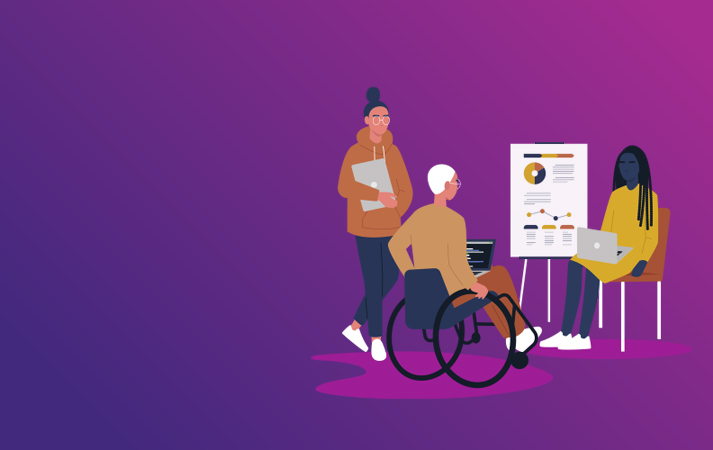A detailed profile of diversity and inclusion within the energy and utilities sector has now been released by Energy & Utility Skills.
The profile covers both the sector as a whole, and a breakdown by industry including water, waste management, gas networks, gas utilisation, power, and the supply chain.
This data, along with the recent inclusion measurement framework results from Energy & Utility Skills, provides focus areas against which the sector can prioritise its actions to attract, recruit, develop and retain a diverse workforce reflective of the communities it serves.
Over the period from 2016-20, there has been a net increase of 3% in the proportion of people with declared disabilities across the energy and utilities sector, putting the sector only a percentage point behind the UK workforce average of 16%.
This figure is particularly notable within the water and waste industries where disabled people make up 19% of their workforce, 3% higher than the UK workforce average. However, there are still improvements to be made within the supply chain, where 7% of the workforce have declared a disability.
Over the same period, the overall proportion of women in the workforce has remained largely unchanged, although increases have occurred in power (+4%), waste (+4%) and water (+9%) industries.
More recently, 2019-20 saw increases in the proportions of women in manager, director, and senior official roles within waste (+4%), water (+2%), and gas utilisation (+3%). Water and waste both saw a rise in the proportion of women occupying professional, associate professional, and technical occupations within their industries.
This is a positive step towards improving the representation of women in leadership positions, but the sector as a whole is still falling short of equity in this area and is significantly behind average UK representation in the workforce, both in leadership roles and across the workforce as a whole.
The proportion of the workforce from an ethnic minority background remains largely unchanged at 6%, around half the UK average which increased from 11% in 2016 to 13% in 2020. Small increases were recorded in the waste and water industries over the past five years.
Other notable findings from this analysis for the period 2016-20 include:
- Total workforce: The workforce increased by 12% over the past five years, from 520,000 to 582,000.
- Young people: 9% of the sector’s workforce is aged between 16-24, which is slightly below the UK average of 11%. There is still work to do in gas networks (4%) and waste & recycling (6%) to attract young people into the workforce.
- Older workers: The proportion of the workforce aged 60+ has remained largely unchanged at 8% over the past five years (compared to 11% across all sectors).
- In gas utilisation (16%) and the supply chain (13%) the proportion of older workers is higher than the all-sector average.
- Non-UK nationals: Despite the wider impacts of Brexit, the proportion of the workforce that are non-UK nationals has remained stable over the past five years at 6% (compared to 12% across all sectors).
- In waste & recycling (8%) and the supply chain (10%) the proportion of non-UK nationals is higher than the all-sector average.
Louise Parry, Director of People & Organisational Development at Energy & Utility Skills, said “We are seeing some progress in the diversity of the energy and utilities workforce, particularly in the representation of women at higher levels and the overall representation of disabled people, although there is clearly still some way to go for the workforce to truly reflect the communities the sector’s workforce serves.
“These diversity and inclusion profiles, along with the sector’s inclusion measurement framework, demonstrate that although progress is slow, the actions we are taking as a sector and as individual organisations are taking hold.”
